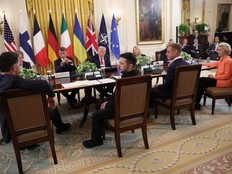MLB’s 2027 work stoppage? Baseball folks already are talking about it

Article content
Major League Baseball’s all-star break is no longer a break, not for the people who run these clubs, anyway.
The draft, which is just about all-consuming for team executives, runs Sunday and Monday of all-star week.
The trade deadline looms at the end of the month. When to rest?
“Circle Dec. 2, 2026, on your calendar,” one exec said this month. “If you have one of these jobs and you ever wanted to go to New Zealand or something, that’s the time to go.”
It was a joke. But it’s deadly serious for the sport.
On Dec. 1, 2026, the collective bargaining agreement between MLB and the players association expires. The expectation throughout the sport: The owners will lock out the players then. That means general managers not only can’t be in touch with members of their own teams, they can’t be in touch with representatives of free agents. No calls. No texts. No deals. No trades. No business.
New Zealand would be kind of a bucket-list trip, wouldn’t it?
This isn’t to put a damper on Monday night’s Home Run Derby or Tuesday night’s All-Star Game, both held on the outskirts of Atlanta. It’s to acknowledge that the threat of a work stoppage is very real and the people who run baseball operations departments already are considering how it will impact the way they do business. As in: Do I really want to commit three years to a player if one of those years could be all but wiped out?
That’s not a doomsday scenario. Those discussions are happening in front offices right now. The last lockout produced the CBA that covered the 2022-26 seasons. It delayed the start of the 2022 season but cost zero major league games. The next one?
“Maybe I’m wrong,” one head of a baseball operations department said. “But this one feels like it’s going to be long.”
Another exec said, “The owners are loaded for bear this time.”
What MLB wants without saying it directly: a salary cap. The Los Angeles Dodgers are spending $341 million on players this year, the New York Mets $332 million, according to Spotrac. The Vegas-bound Athletics are spending $77.1 million, the Miami Marlins $67.6 million. Not coincidentally, the Dodgers and Mets enter the all-star break in playoff position. The A’s and the Marlins do not.
“We do not have the kind of cost certainty, predictability and competitive balance mechanisms in our player comp system that the three other major professional sports have,” Commissioner Rob Manfred said at an investor event hosted last month by the Atlanta Braves, according to Sports Business Journal. “That’s just a fact.”
Two words he doesn’t use: “salary” and “cap.” But you don’t have to read between the lines to understand what he’s saying.
The MLBPA forever has opposed any hard cap on spending, and it will continue to do so. But it’s difficult to see how MLB won’t have leverage here. Owners – already wealthy by definition, enjoying franchise valuations that continue to rise – can prepare and plan to hunker down for a protracted period without games. That’s tougher for, say, a 28-year-old player approaching free agency who loses both salary and the service time that determines how quickly he hits the open market.
There are other issues at hand: Manfred wants to generate more centralized revenue, which he will attempt to do by packaging local media rights to national outlets. Manfred wants a deadline for free agent signings so prominent players won’t be looking for work as spring training begins – a strategy the players believe ownership will use to issue lowball contract offers. On and on.
But with still a season and a half before the end of the current CBA, this isn’t really about which side holds the advantage in a particular area. The threat that most or – gulp – all of the 2027 season will be lost is forcing front offices to strategize around that possibility now.
Take the upcoming free agency class. Kyle Schwarber of the Philadelphia Phillies is an all-star again this summer, with 30 homers at the break. He is at the end of his four-year, $79 million contract. He will turn 33 before next season. His performance in Philadelphia – 161 homers and an .847 OPS in 3½ seasons – should be enough to get him another three- or four-year deal somewhere.
But in the offseason of 2025-26, how do you account for a player who will be in his mid-30s in the second season of his next contract – but perhaps not playing because of a lockout?
“The back years of those deals are always worse, anyway, since the player is getting older,” one executive said. “Can you commit to a guy who might be aging while there’s no baseball?”
If those conversations are happening in the summer of 2025, what will they be like in the winter of 2026-27, when a new crop of free agents is on the market and the lockout is upon us?
Oh, right. It won’t matter. Those conversations won’t be happening. All of baseball will be in New Zealand.











Postmedia is committed to maintaining a lively but civil forum for discussion. Please keep comments relevant and respectful. Comments may take up to an hour to appear on the site. You will receive an email if there is a reply to your comment, an update to a thread you follow or if a user you follow comments. Visit our Community Guidelines for more information.